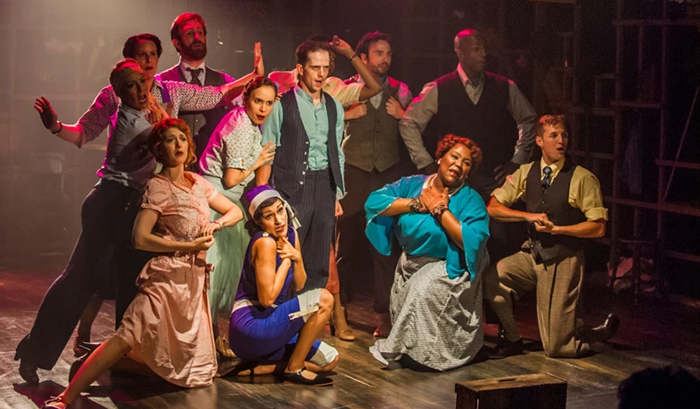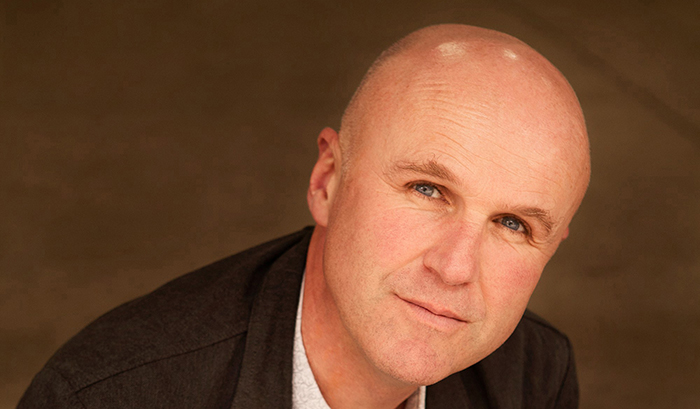What’s the worst thing you could do to your feet?
Could it be…wearing shoes?
Walk into almost any practical shoe store, or pick up a catalog like Footsmart, and the number of shoes that purport to align, realign, support, strengthen, and otherwise correct will knock you off your feet. (Note: All puns intended, without apologies.) What if instead of helping our feet they are actually weakening them? After all, we evolved to walk upright on these belabored feet of ours long before we invented corrective footwear. All those orthopedic technologies might serve as crutches for feet that have been dependent on shoes since childhood. The barefoot philosophy, then, is to reverse the trend by returning feet to the way nature evolved them to be: strong and bare.
And what does science have to say? I put the question to Steven Sashen who, along with his wife Lena Phoenix, owns and runs Xero Shoes. As he points out, much of the research is done on behalf of a multi-billion industry with a vested interest in keeping people beholden to shoes. What research there is on barefoot running/walking vs. shoes tends to be ambiguous at best and poorly designed at worst. While I’m not expert on the topic, my own feeling is that reason sides with the barefooters. Much like nutrition, we have tended over the decades since the Industrial Revolution to throw technology at problems without even figuring out whether the problem actually exists. In the process, we have lost sight of our connection to nature and, most importantly for our health, the way in which our lifestyle relates to our natural evolution. As someone who consistently prefers sandals to shoes under the principle of “less shoe is better,” the prospect of wearing even less shoe than what I wear now appeals greatly.
[img]2492|exact|||no_popup[/img]
Of course, there is the pesky issue of sharp objects and other unwholesome things feet need protection from. This is where Xero Shoes comes in. Unsurprisingly, the company finds its spiritual origin in Christopher McDougall’s Born to Run, a seminal book on barefoot running that brings attention to the extraordinary Tarahumara Indians of Mexico. Like many barefooters, Steven was initially pitched the idea of barefoot running in response to the injuries he accrued sprinting with traditional footwear. Early consistent success led him to make his own pair of huarache running sandals and, in partnership with Lena who added a fashionable flair to the effort, launch a company that features high-tech materials and simple yet sophisticated designs. And so: sandals with outsoles thick enough to protect the foot yet thin enough to allow it to work as it naturally would in contact with the ground. Xero Shoes has grown steadily over the years, enough to warrant an appearance on Shark Tank in search of extra capital to grow the company. (Interestingly, they turned down the sole offer they received. Wisely, in my view, as the shark asked for an unreasonable 50 percent equity in the company.)
Curious to know more, I put other questions to Steven via email. This is what he had to say…
What's the best way for someone new to approach the barefoot lifestyle?
Two key words are: “barefoot” and “gradual.”
Simply: barefoot is best. End of story. The value from being barefoot is that you're *using* your feet the way they're built to be used. You are feeling the world and your feet are free enough to move naturally.
The feeling and feedback you get from your bare skin touching the ground is what will give you the most benefit.
While barefoot is best, it's not always the best idea. That is, there are places and situations where you either can't or shouldn't be barefoot, e.g. restaurants, or surfaces that are especially hot or cold. That is where footwear that gives you the maximum “barefoot feel” or ground-feel comes into play.
Before we get there, let's talk about “gradual.” Most people use their bodies differently, depending on their footwear. Their gait will be different if they are in running shoes vs. flip-flops vs. barefoot vs. cowboy boots. It's natural. Each different gait style uses your muscles differently. If you haven't been barefoot in a while – especially if you want to explore barefoot running – you probably are not used to using your muscles in the way that barefooting will demand.
Sometimes this means that the transition to barefoot may require strengthening. More often it means simply paying attention to your body, finding the comfortable way to move that doesn't require extra effort (that is, I would focus on moving with less effort before trying to get stronger).
Regardless of whether you need to strengthen or make minor form adjustments, do this in small doses. Don't simply ditch your running shoes and go for a five-mile barefoot run, for example. Start SMALL. Take a 30-second run or a two-minute walk. See how you feel the next day. If you are sore, wait until the soreness subsides. Repeat the same tiny workout, seeing how you could move more effortlessly and have more fun until you can do it without soreness. On your next workout, add 30 seconds to your run or two minutes to your walk.
In other words, use the feedback from your feet to adjust how you move, and the feedback from your muscles to tell you how to progress.
How much of a difference do the surfaces we walk on impact our ability to walk barefoot? I often find that walking on concrete or asphalt results in a harder impact than grass or sand, even when I make an effort not to stomp.
[img]2493|right|Xero Shoes' DIY Kit||no_popup[/img]Clearly some surfaces are harder or softer than others. But as you become more familiar with using your muscles, ligaments and tendons as the natural springs and shock absorbers that they're meant to be, you can handle the hardest surfaces without any problem. In fact, we recommend making the transition to barefoot on the hardest, smooth surface you can find since it'll give you the most feedback about your form.
There are two ironies about soft surfaces and padding. The first is that when we have soft, padded surfaces, we use them… and when we do, we tend to land on our heels first, with a straight leg, which sends force directly through the joints of the ankle, knee, hip and back. In other words, what feels good on the foot can often be bad for the rest of the body.
The second irony is when people get rid of their padded shoes, but then only go barefoot on soft surfaces… this is like taking the padding out of your shoes and putting it everywhere you walk. You have just moved the problem from your feet to the world.
If you're not comfortable walking or running on asphalt, you still have more to learn and attend to. Remember the gradual part? Re-learning what our ancestors and what tribal societies have always done can take time. There is no rush.
On a different note, Xeros Shoes are ideal for warm weather. Any plans for cold weather footwear?
[img]2491|right|Xero Shoes newest product, the Sensori Venture||no_popup[/img]I've worn nothing but Xero Shoes for over four years, and that includes three Colorado winters.
I'm not suggesting anyone else do this, but I'm pointing out that your feet and body can adjust and adapt more than you think.
Plus, you can add thick wool socks or toe sock and still wear Xero Shoes when it gets colder.
And, yes, we are working on some cold weather barefootware.
Finally, where do you hope Xero Shoes will be five years from now?
We have a lot of plans for developing new products for every activity where you would want to be as close to barefoot as possible.
Our company began because of barefoot running. But as we've gotten more popular (for example, being seen by 8 million people when we were on Shark Tank), we know people love our shoes for walking, hiking, yoga, working out, paddle boarding, for everything. We're expanding to include all of them in our Xero family.
We believe there are health benefits to natural movement that haven't been fully explored yet. We want to support well-designed studies to explore those possibilities.
We also have a philanthropic arm. Our sandals were inspired by the Tarahumara of Mexico, who were featured in The New York Times bestseller, Born To Run. We give back to them through the Tarahumara Children's Hospital Fund. We want to expand our charitable work and help not only the Tarahumara but others who still use natural footwear.
Many thanks to Steven for his time answering my questions. To learn more about Xero Shoes and barefoot running/walking, visit www.xeroshoes.com. It’s a veritable treasury of information.
So what do you think? Shoes or barefoot? Visit my blog to join the discussion.
Frédérik Sisa is the Page's Assistant Editor and Resident Art Critic. He is also a tweeting luddite and occasional blogger, and can be reached at fsisa@thefrontpageonline.com.







